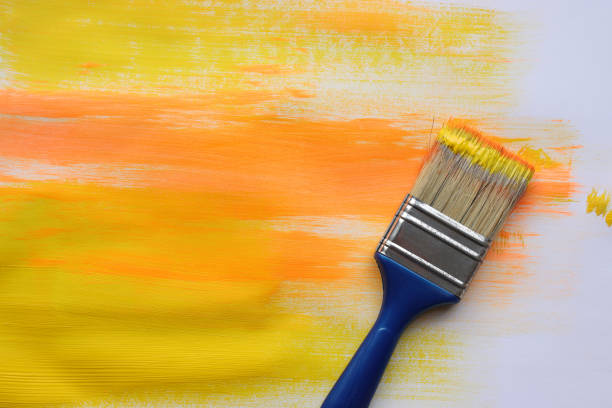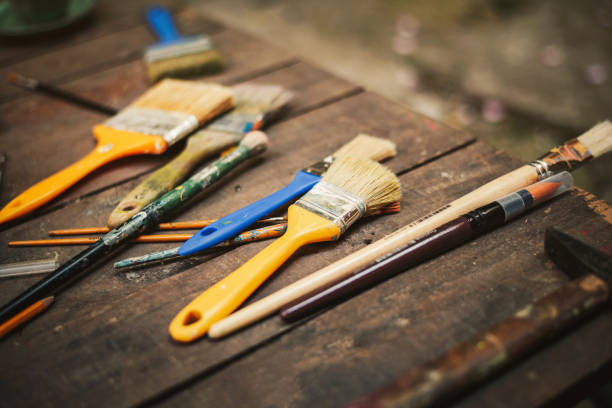A guide to making your own paint. So you can produce colors yourself naturally, quickly, and cheaply. And that sustainably and without chemicals, with food from your own household!
Step by step to your own color: Producing natural colors is very easy and doesn’t take much time or money. You can store homemade food-based paints in the fridge for a few days and use them as you like during that time. The big advantage: They are naturally degradable and contain no chemical components.
1) What are colors made of?

Colors consist of three main components: pigments, binders, and solvents. Many substances that are suitable as basic components for DIY paint production can either be purchased cheaply in hardware stores (acrylic binder, white glue, etc.) or can be made in your own kitchen using simple household products.
2) Gain color pigments
Pigments can be obtained from food colors, which are available in pharmacies, or made from the food itself. You can see which food you use to achieve which color in the table below.
3) Egg as a binder – egg tempera
You can use egg tempera to bind your paint. For this, egg yolk, oil, and water are mixed together in the same ratio. The amount of oil and water can vary (less oil and more water can be used).
Any vegetable oil can be used as an oil. However, linseed oil is particularly suitable because it dries quickly. The color pigment is then worked into the mixture of egg and oil until the desired color is achieved.
To avoid lumps, small amounts of the pigments should be worked in one at a time. If the shade is too intense, the mixture can be diluted with water. Such paints from egg tempera are well suited for painting.
4) Flour as a binder
As an alternative to the egg as a binding agent, you can also use the top household remedy flour. To make such so-called paste paints, you have to heat 2 tablespoons of flour in a saucepan with 400 to 500 ml of water and bring it to a boil. Make sure to stir constantly to prevent lumps from forming. If there are any lumps, you can simply pour them off through a sieve.
Alternatively, you can add the flour directly to the colored juices. However, you have to mix this mixture very thoroughly. The more heat, the fewer lumps will form. The pigments can be incorporated into the mass once it has cooled. Again, water can be added to get lighter shades. Paints made with flour as a binder can be used well as finger paints.
5) Milk as a binder
Instead of flour and egg, you can also use dairy products as a binding agent. For such a color, which uses casein as a binder, a tablespoon of quark (alternatively milk or condensed milk) is mixed with pigments in the same ratio.
You can then stir a small amount of water into this mixture. You can then use water to correct the color tone you have achieved afterward. This color is suitable for painting walls and artistic painting.
6) Starch as a binder
To make cornstarch-based paints, cornstarch and baking powder are mixed together in equal amounts. Then twice as much vinegar is added. Then food colors or natural colorants (see table) are added. Such starch-based paints are particularly useful as water-based paints.

At a glance: This is how you can make colors yourself
To make your own paints, you’ll need things you probably already have at home. So it’s a perfect DIY that doesn’t even require you to leave the house and buy special materials. All paints consist of three elements – pigments, binders, and solvents.
You can always use water as a solvent. You can find the right home remedy as to a basis for the pigmentation of your desired colors in the table above. As a rule, different ingredients lead to the goal there, so there is a high chance that you have one of the foods you need for your favorite color at home.
You have four different classic baking ingredients to choose from as binding agents: egg, flour, milk, and cornstarch. This depends on the purpose for which you want to produce the paints. The egg is suitable for classic painting, flour for finger paints, milk for both classic painting and painting walls, and cornstarch for making watercolors.
